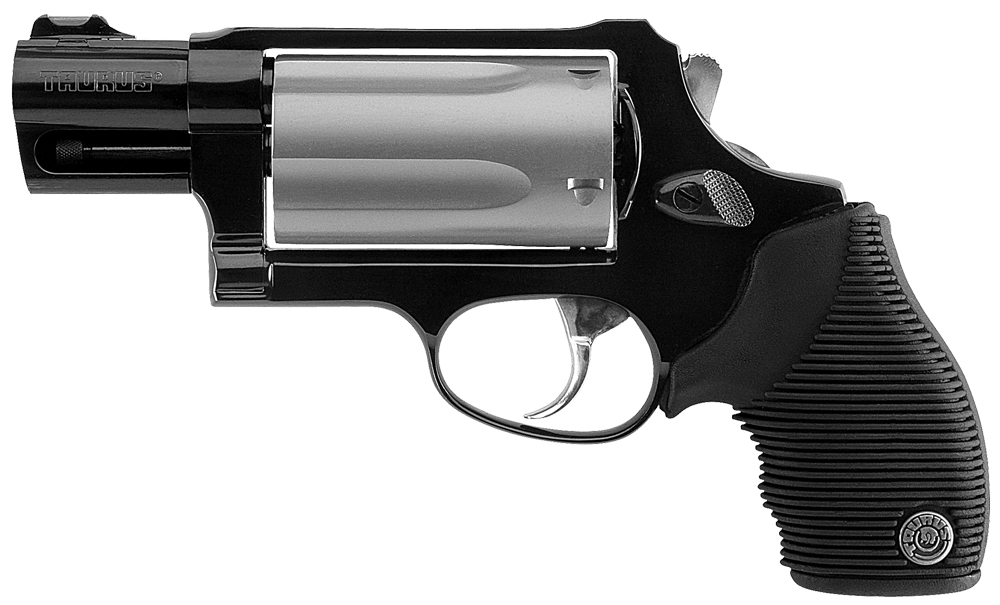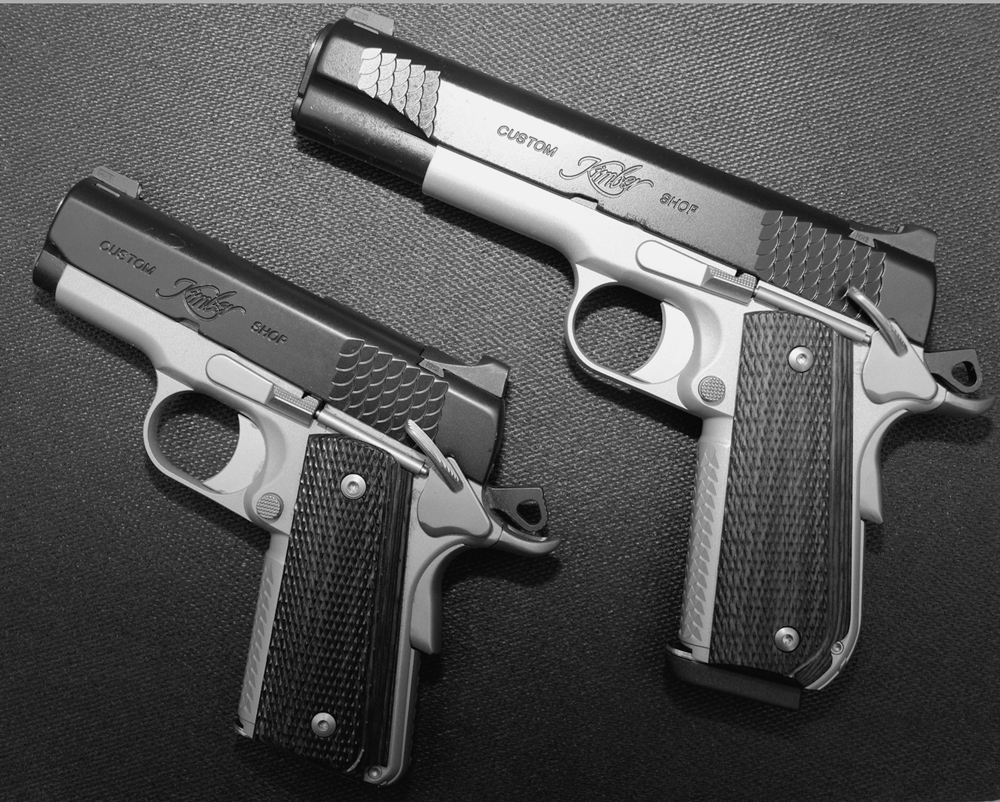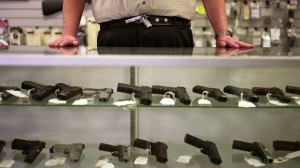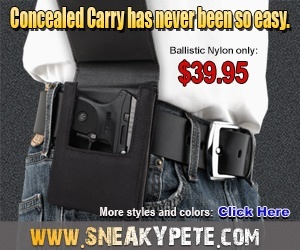1911 Shootout
We ordered in seven basic, full-size, affordable 1911s and put them through a head-to-head shootout to find out which ones are the best buys. Here’s how they rate.
I have been involved in the shooting sports for longer than I care to admit. In that time I have come to two ironclad conclusions about American shooters: No. 1. They love 1911 pistols. No. 2. They crave a good deal.
Now, this may come as a shock to some of our younger readers, but when I bought my first 1911 I had a choice of buying a Colt or…buying a Colt. At that time Colt was the only manufacturer (other than some foreign military arsenals) making 1911 pistols.
Today, dozens of firms, both in the U.S. and overseas, produce 1911 pistols at a steady pace to meet the ever-increasing demand for this iconic design.
Anyone who has ever perused a gun magazine or surfed the Web can tell you that these companies offer 1911s ranging from plain to exotic in finish and from “GI” to “race gun” in design and function. While the price of a basic 1911 is something most of us can afford, the tariff on a top-of-the-line custom-built pistol can easily run $3,000 to $5,000.
While many of us would like to buy a built-to-order 1911, there are those of us who can’t. And unless you intend to engage in serious handgun competition, maybe you really don’t need a tricked-out 1911. Maybe a plain-Jane pistol will address your needs adequately. But which one should you consider? To answer that question Shooting Times put a selection of “affordable” 1911 pistols through a shootout to see if they could do what was needed to be done.
For our purposes we decided that the definition of “affordable” would be a 1911 with an MSRP under $900. We sent out requests to all the major makers and a few that might not be all that well known to you, and we soon had received basic 1911s from Magnum Research, American Tactical Imports, Ruger, Para, Auto-Ordnance, Springfield, and Taurus. Keep in mind that this was during the summer of 2013 when guns were extremely hard to come by. In fact, several companies just didn’t have any available to include in our shootout.
All of the pistols are very similar—they are, after all, 1911s. But they also vary in materials, construction, grips, sights, controls, etc.
Let’s get the similarities out of the way first. All the pistols are full-size 1911s with steel frames and slides, no lightweight alloy guns. All feature the traditional 1911 single-action trigger, single-column magazine, and fixed sights. And, yes, all are chambered for the .45 ACP.
Now for their differences.
Of our seven test pistols, three (Ruger, Para, and Auto-Ordnance) were stainless steel. The remaining four had carbon-steel slides and frames.
Only one pistol (Springfield) featured an original 1911-style short trigger; the rest had the more popular long trigger. Among these, several (Auto-Ordnance, Ruger, Magnum Research, Para, and Taurus) had skeletonized or ventilated triggers.
GI-style thumb and grip safeties were featured on two pistols (Springfield and ATI), and the others had extended thumb and beavertail grip safeties. Only one (Taurus) had an ambidextrous safety, and none had extended magazine releases. Two (Springfield and ATI) used GI-style hammers; the Taurus had a Commander-style rowel hammer; and the rest had elongated, skeletonized hammers.
Two pistols (Springfield and Taurus) had key-activated, internal security locks. Dual grasping grooves on the slides and checkered frontstraps were features of two guns (Taurus and Auto-Ordnance).
While fixed rear sights were fitted to all the pistols, they ran the gamut from GI-style (ATI) through the more practical high square notch (Para and Springfield) to contoured, low-mount combat sights (Magnum Research, Ruger, Auto-Ordnance, and Taurus).
One pistol (ATI) had a round blade, GI-style front sight, and one (Para) had a green fiber-optic unit up front. The remainder had square blade front sights, either plain black or with white dots.
Full-length recoil spring guide rods were featured on three pistols (Magnum Research, Taurus, and Auto-Ordnance), while the others used the original short guide rod.
Five of the pistols (Springfield, Ruger, Magnum Research, Para, and Auto-Ordnance) had beveled magazine wells.
All except one (Springfield) came with eight-round magazines. The Springfield magazine holds seven rounds.
The Shootout
To help me run this pack of 1911s though their paces, I obtained the assistance of my good friends Dick Cole, Butch Simpson, and Dick Jones—action pistol shooters all. After much rumination and discussion, we decided that each of us would run each pistol through two drills.
The first was a field course consisting of 11 USPSA cardboard targets and two steel plates, which would be shot at distances ranging from 5 to 25 yards and would require movement and multiple reloads. Each shooter would run each pistol through this stage twice.
The second stage would consist of a rack of seven 8-inch steel plates. The shooter would begin with a fully loaded eight-round magazine plus one round in the chamber and engage the plates from a distance of 8 yards. This drill would be run three times with each pistol with no reloads permitted.
Each cardboard target had to be engaged with two shots, and the steel plates had to be knocked down to score. Scoring would consist of the shooter’s time plus these penalties: +0 seconds for A and B zone hits, +1 second for C zone hits, +2 seconds for D zone hits, +5 seconds for a miss or no-shoot hit.
Each shooter would then rate each pistol from 1 (poor) to 5 (excellent) in six categories: reliability, accuracy, ergonomics, recoil control, trigger, and sights. The points would then be added together for a final score.
Several days before I met my friends for the shootout, I fired each of the 1911s with three different brands of ammunition. As can be seen by the results in the accuracy chart, they all produced groups that were more than adequate—and some that were downright impressive. However, during this initial stage of testing, I experienced several failures to feed or go into battery with the JHP ammo.
Afterwards each pistol was disassembled, cleaned, and lubed, which would be the only maintenance they would receive. If any of them choked during the shootout, we would attempt to clear the problem at the range and keep shooting.
The four of us met on a hot, humid July morning at Dick Jones’s Lewis Creek Shooting School in High Point, North Carolina.
Shooting the field course exposed a few shortcomings in several of the guns, primarily failures to feed (mostly with JHP ammo) and premature slide lock-backs.
As these were all new, out-of-the-box pistols, I did not see this as being indicative of any real problems, and by the time we shot the field course the second time, there was a marked improvement in overall functioning.
To further test reliability, in addition to the magazines the pistols came with, all pistols were fired with a selection of high-quality 1911 magazines from Wilson Combat, Brownells, Tripp Research, and Ed Brown.
On the last run of the field course, Dick Jones experienced the first problem of the day when the rear sight of the Auto-Ordnance Thompson 1911 fell off. When we attempted to reinstall it, we discovered that the setscrew was cross threaded and could not be loosened or tightened. It had apparently been tightened just enough at the factory to hold the sight in place, but firing several hundreds of rounds jarred it loose. Because of that the Auto-Ordnance pistol was retired, and none of us were able to shoot it during the plate rack stage.
Even though we attempted to alternate the pistols, thanks to temperatures hovering in the mid-90s and the fact that there was no shade, they all got quite hot during the plate rack stage, making them uncomfortable to handle.
It was during this stage that I experienced our next firearm failure when the ejector on the ATI FX45 sheared off, preventing me from completing the third rack of plates and one other shooter from using it at all.
Including the earlier accuracy testing, by the end of the day, we had run approximately 2,400 rounds of ammo through the seven test guns. Then we got down to grading the guns.
The Scores
After much thought, cogitation, arguing, challenges, and threats, we came to the following results. Note: 120 points would be a perfect score. Check out the results below, and join the debate by leaving us a comment about your favorite budget 1911.
Nice-Price 1911 Shootout
Let me explain how we arrived at these scores. The Para showed itself to be an all-around fine-handling, reliable pistol, but what clinched its first-place position was the fiber-optic front sight. It allowed fast target acquisition, accurate shot placement, and smooth transitioning between targets.
The Ruger and Magnum Research guns came in second and third places, but if they had been fitted with fiber-optic front sights, they very well could have tied for first place.
Despite it being a mil-spec pistol with GI-style grips and controls, the Springfield’s performance impressed us. Just put an extended thumb and beavertail grip safety on it, and it would be a real winner.
Overall the Auto-Ordnance fared well, and there were several positive comments about its overall quality. Its frame checkering was much appreciated by all. If it hadn’t lost its rear sight, it very well might have finished in first or second place.
The Taurus was an impressive pistol with frame checkering, ambidextrous controls, good grips, and decent sights. But it had a heavy trigger. I mean a really heavy trigger that caused accuracy to suffer and forced us all to shoot slowly. If it had had a lighter trigger, I’m sure it would have finished near the top.
ATI’s FX45 was a pure mil-spec pistol whose sights, controls, and grips were “basic,” and while that is not necessarily a bad thing, they did have an adverse effect on handling and accuracy. But it was the only one of the seven test guns that suffered what could be considered a “catastrophic” failure that prevented it from functioning at all. For this reason it was relegated to last place.
Well, there you have it. As the old saying goes, “The numbers don’t lie.”
 ne of the most common themes taught in defensive firearms classes is situational awareness. First designed by Col Jeff Cooperin the 1970s, the situational awareness chart represents the degrees of awareness that a person experiences in relation to their surroundings.
ne of the most common themes taught in defensive firearms classes is situational awareness. First designed by Col Jeff Cooperin the 1970s, the situational awareness chart represents the degrees of awareness that a person experiences in relation to their surroundings. ng “distracted”. This condition is probably responsible for more visits to the emergency room or the morgue than any other; not only in a life or death situation such as a gun fight, but with regard to car accidents and industrial accidents.
ng “distracted”. This condition is probably responsible for more visits to the emergency room or the morgue than any other; not only in a life or death situation such as a gun fight, but with regard to car accidents and industrial accidents.















